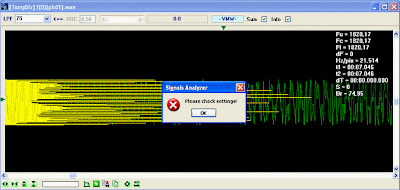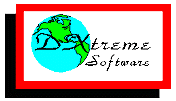SA update to the version v 6.2.5.2/3
Current update though doesn't affect the main SA possibilities, nevertheless solves a range of problems.
The first and bad enough problem, is connected with imaging/mapping of the correlative triangle (CT) in OFDM module. I underline only with imaging.
At the usual revision of the algorithms and their decisions, mathematic had confused us with the news, that the correlative triangle left side can't be good/correct/rightly, as there is no general root at words "rightly" and "left". :-)
The joke had been estimated, but nevertheless, really, at the very early beginning of OFDM module development, an output of image CT on the screen was unrolled/turn on 180 degrees concerning a vertical axis. And the right (good/correct/rightly) side CT has appeared on the monitor as the left side. As it doesn't influence results of operation of the algorithm, the error in display wasn't so noticable and had been existing long time enough.
Actually such awkward situation is gross enough error, although it doesn't influence the general results.
***
We remove historically added restrictions on the lower bound of filters in WF module and the general-purpose/universal demodulator. In the current version the general approach to a filtration is reconsidered, and the range of setting of frequency of a cutoff of filters is accepted from 1 to Fd/2 a Hertz.
It allows to solve, in some cases, the analysis tasks more effectively.
***
It is possible to set any, in limits from 1 to 1000 level/step of time gating in VMW module, at the usage of a stroboscopic output of the image, in this version.
It as expands VMW module possibilities to the better side.
***
The error in ISD corrector operation is eliminated, we were informed about this error by users. The corrector incorrectly worked in many cases, it had been connected with update of the algorithm of correction in version 6.2.4.6 the Error was thin enough, and to find it out casually was rather problematic: that once again shows, that users are very attentive and skilled in analysis questions.
In this version, besides bug fixing, speed of ISD corrector operation ISD was increased approximately in one and a half-two time, and its efficiency is raised. Thus as before, the algorithm isn't omnipotent, but it is general-purpose/universal, and it still can be mistaken, but in the majority of practical cases, it is well enough compensates various, not fatal distortions of signals.
***
In all previous versions, attempt to load the files with big size and big sampling rate in VMW module, leaded to an exceptional situation (error). Sampling rate reduction In some cases helps, but in general, it does not solve the problem. In version 6.2.5.3 this moment is corrected.
Record-example the size of record ~ 10 mbytes.
***
Also possibility to synthesize various MFSK signals has been added into OCG programm, al though it doesn't affect SA, nevertheless, we recieved requests to include this function into synthesizer, so we realized it it in version OCG 1.2.1.2 The result of synthesis of signal MFSK-11 is shown below.
As usual, a range of small, hardly noticeable improvings had been done, and some minor problems were solved.
Good Luck~























